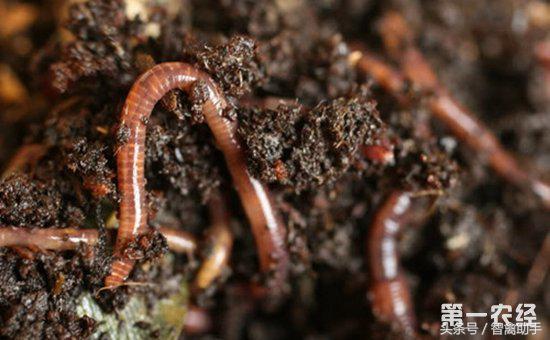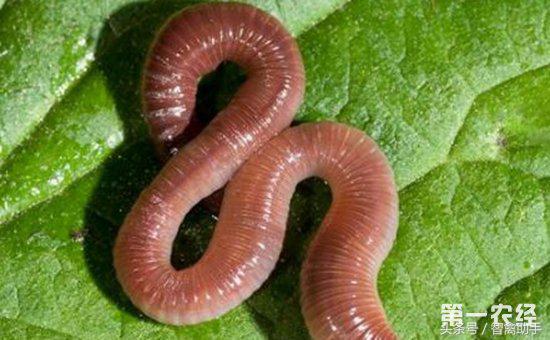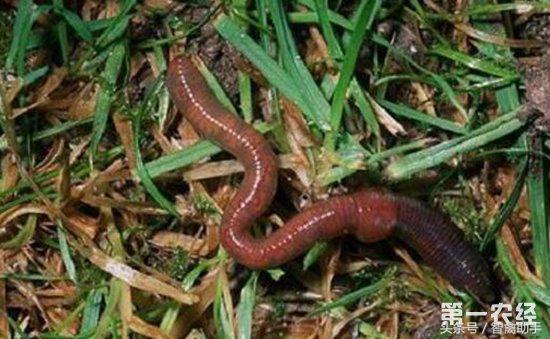How should earthworms be bred?

Earthworms are very common terrestrial annelids. More than 2500 species of earthworms have been known in the world, and 229 species have been recorded in China alone. Earthworms can loosen the soil, improve the soil, improve fertility and promote agricultural production. In addition, earthworms also have some effects on the human body, such as insecticidal detoxification, defecation and diuresis. Today, there are already many professional earthworm farmers, so how should earthworms be raised? Let's take a look at the breeding techniques of earthworms.

Picture: earthworms
Culture techniques of earthworms
I. selection of breeding sites
The location of breeding is the most important issue for earthworm farming. The outdoor place is the most suitable for raising earthworms. In this environment, earthworms have strong living ability and multiply quickly. Indoor is generally suitable for small-scale breeding, or the breeding of newly hatched small earthworms, because the newly hatched young worms are small and do not have a wide range of activities. If the combination of outdoor and indoor breeding is adopted, it will produce good results. The ideal location, preferably under the tree, the shade is the coolest, can effectively reduce earthworms to climb out and escape.
Second, the control of growth conditions
The breeding bed is located outdoors, and protective measures must be taken when there is excessive sunshine, hot wind and rain. If there is a shadow of natural trees is the best, otherwise it is necessary to add artificial cover.
In hot summer, direct light should not be exposed to more than 2-3 hours a day. This is because the earthworm is sensitive to light. When the strong light shines, it does not eat and gets into the ground. So the shadows of natural trees are better protected than things like straw curtains, rags, straw and horse dung paper on the breeding bed.
The most suitable growth temperature for earthworms is 15 ℃ ~ 27 ℃. When the growth temperature is below 0 ℃ and above 32 ℃, the activity becomes slow, the earthworms stop eating, the mating process becomes slow, and basically there is no reproductive process. It is difficult for earthworms to hatch when the temperature of the culture bed is generally below 10 ℃ and above 27 ℃. The most suitable humidity in earthworm growing environment is 60%-70%.

Picture: earthworms
III. Feed supply
Most of them grow and mature quickly after supplying earthworm faeces, grains, compost and other decaying organic matter. The selected feed should contain vitamins, minerals, protein and other ingredients, which are indispensable nutrients in the growth and development of earthworms. Earthworms prefer sweets.
1. Times of feeding
When earthworms finish the feed given for the first time, they must give it to the second feed as soon as possible. After eating the feed, the change of the feed surface can be used as the basis for the time and quantity of adding feed to the earthworm. For ease of observation, sawdust and straw can be added to the feed and these additives will be pushed to the surface as the earthworms eat. The amount of feed around earthworms can be judged by the amount of sawdust and straw pushed to the surface.
2. Growth promoters of earthworms
In order to provide a wide variety of feed and adjust the nutritional balance, it is best to supplement growth promoters in time, such as blood meal, fish meal, animal meat and bone powder, activated sludge, industrial waste, etc. Earthworms have no teeth. They can swallow feed and sand together and chew feed with sand to improve the effect of digestion and absorption.

Picture: earthworms
IV. matters needing attention
1. Earthworms have a large amount of food, so they should be given more food, otherwise earthworms can easily climb out of the breeding bed.
2. The harvest time of earthworm is closely related to its growth and development stage. When the earthworms reach sexual maturity and zoning, the body weight increases slowly, the feed utilization rate decreases, and when the density of cultured earthworms is too high, the earthworms will become thin. if only in order to get the vermis, this is the harvest time.
3. Every time the students finish the experiment, they should put the earthworms back to the breeding ground in time.
4. Bacteria contribute to the digestion of earthworms, but when the water content in the feed is too high, the bacteria propagate too fast and are easy to produce acidic substances, which is not conducive to the growth of earthworms, so the moisture in the feed should not be too large.
5. In summer, the use of fresh grass in bedding is easy to produce heat, which is disadvantageous to the growth of earthworms. Therefore, when using fresh grass, it should be added to plant worms after three days.
6. When the air is too humid or windy, earthworms can sense the precursors of rain and run out. If you are afraid of earthworms climbing out, it can be prevented by electric lighting.
The above is the answer to the breeding technology of earthworms. I hope to give you some help.
- Prev

Culture method of four Seasons Begonia
Begonia flowers have been loved by many people, so many people raise crabapple flowers in their own homes. There are many varieties of crabapple flowers, the four seasons crabapple is the most popular, with plants.
- Next

Industrial breeding techniques of Mutton Sheep
With the rapid development of social economy, people's quality of life and living standards continue to improve, the demand for more and more meat, thus promoting the breeding line.
Related
- On the eggshell is a badge full of pride. British Poultry Egg Market and Consumer observation
- British study: 72% of Britons are willing to buy native eggs raised by insects
- Guidelines for friendly egg production revised the increase of space in chicken sheds can not be forced to change feathers and lay eggs.
- Risk of delay in customs clearance Australia suspends lobster exports to China
- Pig semen-the Vector of virus Transmission (4)
- Pig semen-the Vector of virus Transmission (3)
- Five common causes of difficult control of classical swine fever in clinic and their countermeasures
- Foot-and-mouth disease is the most effective way to prevent it!
- PED is the number one killer of piglets and has to be guarded against in autumn and winter.
- What is "yellow fat pig"? Have you ever heard the pig collector talk about "yellow fat pig"?

